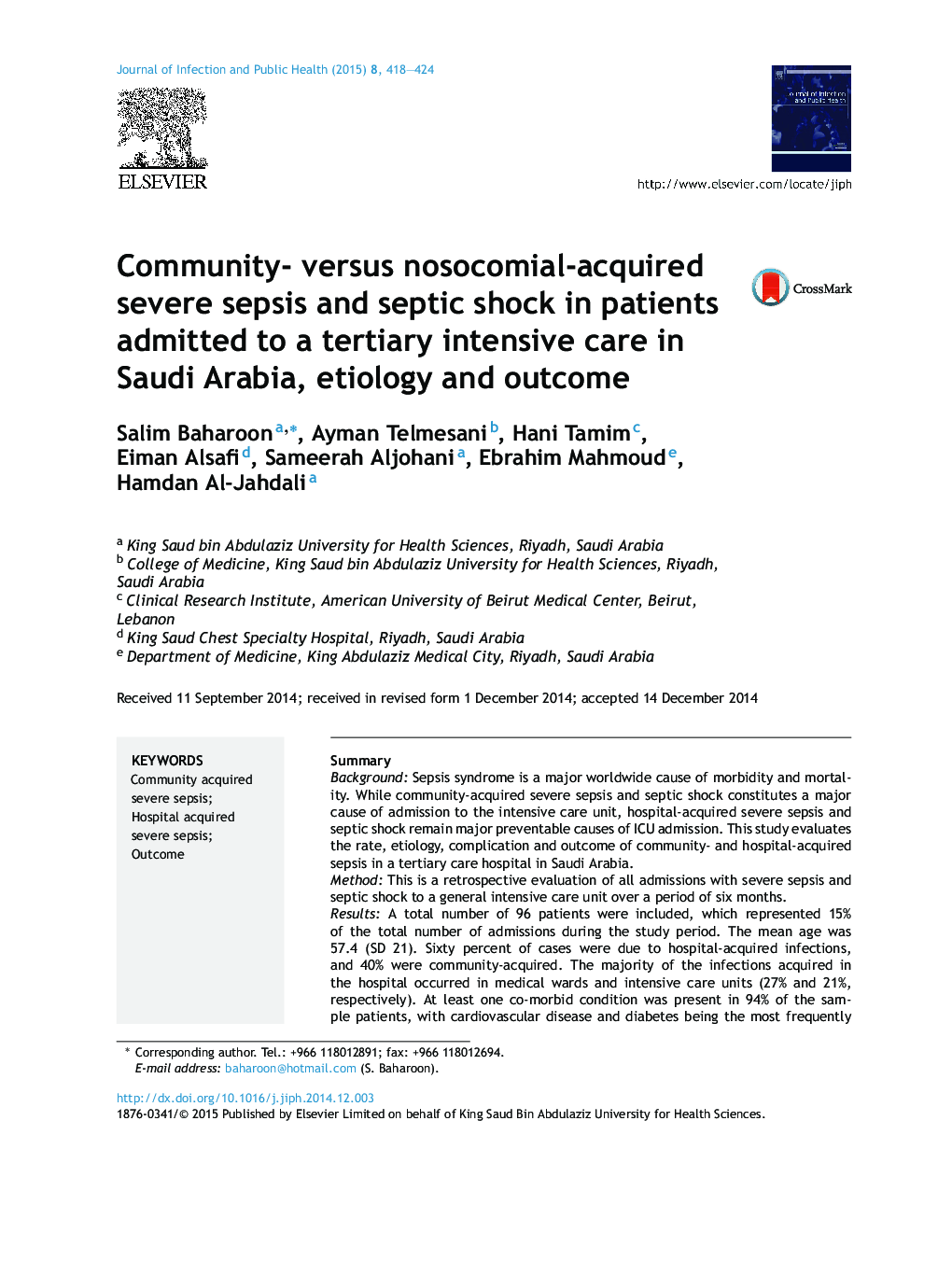| Article ID | Journal | Published Year | Pages | File Type |
|---|---|---|---|---|
| 3405849 | Journal of Infection and Public Health | 2015 | 7 Pages |
SummaryBackgroundSepsis syndrome is a major worldwide cause of morbidity and mortality. While community-acquired severe sepsis and septic shock constitutes a major cause of admission to the intensive care unit, hospital-acquired severe sepsis and septic shock remain major preventable causes of ICU admission. This study evaluates the rate, etiology, complication and outcome of community- and hospital-acquired sepsis in a tertiary care hospital in Saudi Arabia.MethodThis is a retrospective evaluation of all admissions with severe sepsis and septic shock to a general intensive care unit over a period of six months.ResultsA total number of 96 patients were included, which represented 15% of the total number of admissions during the study period. The mean age was 57.4 (SD 21). Sixty percent of cases were due to hospital-acquired infections, and 40% were community-acquired. The majority of the infections acquired in the hospital occurred in medical wards and intensive care units (27% and 21%, respectively). At least one co-morbid condition was present in 94% of the sample patients, with cardiovascular disease and diabetes being the most frequently encountered disorders (58%). Both community and hospital-acquired severe sepsis and septic shock carry very high mortality (58%). The ICU length of stay was significantly longer for hospital and ICU acquired infections.ConclusionBoth community and hospital-acquired infections carry high mortality. Hospital-acquired severe sepsis is frequent in medical wards and ICUs, and measures to further evaluate risk factors are prudent.
